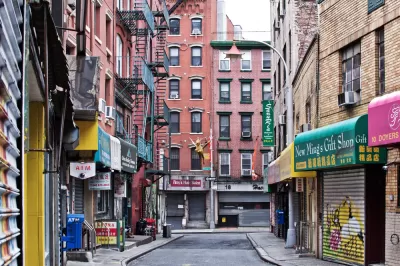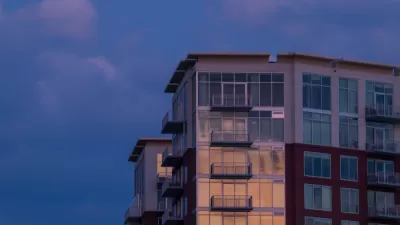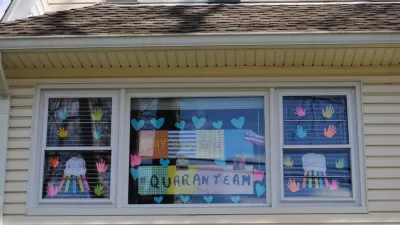Large numbers of commercial renters in New York City are missing rent, according to reports.

"Across New York City, commercial tenants are falling behind in rent at unprecedented rates as the coronavirus outbreak has caused a nearly complete lockdown of the city for two months," reports Mathew Haag.
While Haag doesn't share citywide statistics to illustrate the scope of the problem, several organizations in the city have large sample sizes to report. For instance, the Community House Improvement Program, which represents around 4,000 landlords of rent-stabilized apartment buildings, reported that among its members who also have commercial tenants, "two-thirds of those tenants did not pay rent in April and May." (That figure compares to 25 percent of residential tenants missing rent in the same group.)
Moreover, "Vornado Realty Trust, one of the city’s biggest commercial landlords, said that nearly all its retail clients with the exception of grocery stores and other essential businesses have sought financial relief, such as a deferral on rent payments," reports Haag.
According to Haag, the number of commercial renters falling behind outpaces the residential rental market, which faces its own crisis of deferred payments, and the entire commercial market is at a breaking point. The effects of the worsening crisis for commercial renters could have catastrophic consequences for the city.
If building owners cannot come up with enough money to pay their next property tax bill in five weeks, a deadline the city has refused to postpone, the city will be starved of an enormous revenue stream that helps pay for all aspects of everyday life, from the Fire Department to trash pickup to the public hospitals. It could lead to a bleak landscape of vacant storefronts and streets sapped of their energy.
FULL STORY: New Threat to New York City: Commercial Rent Payments Plummet

Alabama: Trump Terminates Settlements for Black Communities Harmed By Raw Sewage
Trump deemed the landmark civil rights agreement “illegal DEI and environmental justice policy.”

Planetizen Federal Action Tracker
A weekly monitor of how Trump’s orders and actions are impacting planners and planning in America.

The 120 Year Old Tiny Home Villages That Sheltered San Francisco’s Earthquake Refugees
More than a century ago, San Francisco mobilized to house thousands of residents displaced by the 1906 earthquake. Could their strategy offer a model for the present?

In Both Crashes and Crime, Public Transportation is Far Safer than Driving
Contrary to popular assumptions, public transportation has far lower crash and crime rates than automobile travel. For safer communities, improve and encourage transit travel.

Report: Zoning Reforms Should Complement Nashville’s Ambitious Transit Plan
Without reform, restrictive zoning codes will limit the impact of the city’s planned transit expansion and could exclude some of the residents who depend on transit the most.

Judge Orders Release of Frozen IRA, IIJA Funding
The decision is a victory for environmental groups who charged that freezing funds for critical infrastructure and disaster response programs caused “real and irreparable harm” to communities.
Urban Design for Planners 1: Software Tools
This six-course series explores essential urban design concepts using open source software and equips planners with the tools they need to participate fully in the urban design process.
Planning for Universal Design
Learn the tools for implementing Universal Design in planning regulations.
Clanton & Associates, Inc.
Jessamine County Fiscal Court
Institute for Housing and Urban Development Studies (IHS)
City of Grandview
Harvard GSD Executive Education
Toledo-Lucas County Plan Commissions
Salt Lake City
NYU Wagner Graduate School of Public Service





























